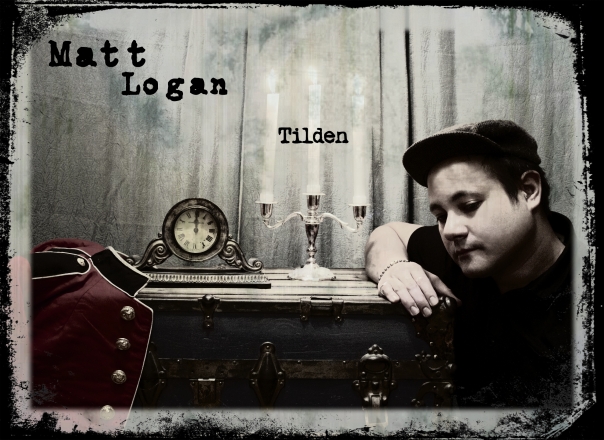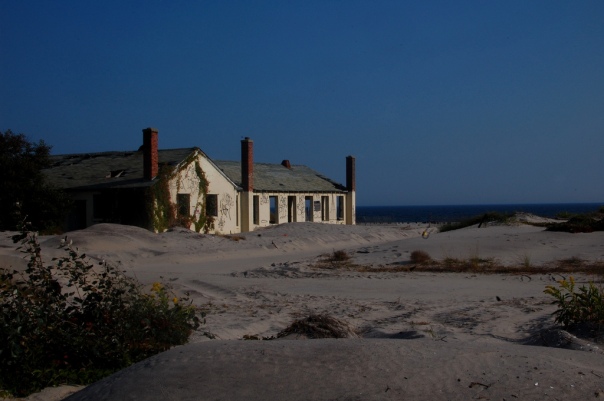Category Archives: music
“April King” – by Snazz Mammoth
A 2-part set of songs by my solo cello-rock-electronica project –
we were gone
looking back on our regrets
playback on an old cassette
you will be blamed
for taking off too soon
waking up the neighborhood
piling in the backseat
hit the gas and
off we go
we’re gone
we were gone
none of us were wrong
another bridge is calling
the playing field has been
all leveled out
we know we’ve been untrue
never wanted you to be disappointed
we’ll drive on
and on
and further
A Thousand Different Sighs
We have been gone so long
the pull’s too strong
out here
open road
We don’t know when
when we’ll be
be back home again
We sigh
a thousand different sighs
We every stop we make
our mind does wake
Under open sky
We wish we knew
Knew when we’d
We’d be back again
We sigh
a thousand different sighs
Let England Shake – PJ Harvey
“We got up early, washed our faces
Walked the fields and put up crosses
Passed through the damned mountains
Went hellwards and some of us returned
And some of us did not
In the fields and in the forests
Under the moon and under the sun
Another summer has passed before us
And not one man has, not one woman has Revealed the secrets of this world
So our young men hit with guns in the dirt
And in the dark places
Our young men hit with guns in the dirt
And in the dark places
Our young men hit with guns in the forests And in the dark places
And not one man has, not one woman has
Revealed the secrets of this world”
I should start by saying that I’m only familiar with PJ Harvey’s very early stuff, and somehow missed what she’s done for most of her career. Nonetheless, this album, released in February of 2011, has recently grabbed me.
Every generartion since time immemorial has its war music, and the topic crosses through every genre, from the bombastic 1812 Overture and Benjamin Britten’s landmark War Requiem, to the 1960’s folk protest song. The reason is obvious – war stirs extreme and confusing emotions and experiences, and the arts addressing it try to make some sense of it, for both those directly, and indirectly involved.
In Let England Shake, PJ Harvey and filmmaker Seamus Murphy take a hard look back at the defining conflicts their country has experienced over the past century, and reinterpret that history in a way that addresses the current war generation of Iraq and Afghanistan. The danger in making art about war is that one will become too heavy-handed, but Harvey and Murphy navigate the territory well, not shying away from being explicit, but not indulging in it. There are countless war songs out there, but no artist has surmounted the challenges of making an entire album on the topic. As the NME put it: “Francis Ford Coppola can lay claim to the war movie. Ernest Hemingway the war novel. Polly Jean Harvey, a 41-year-old from Dorset, has claimed the war album. And like Coppola and Hemingway, calls it straight…”
The lyrics are succinct and the musical production is hazy and ethereal, at times verging on the raw distorted psychedelia of the Velvet Underground and Mazzy Star. Each song develops constantly, and ends differently than it begins. The changes are often disjointed, which match well the jarring nature of violence. Atop this dreamlike bed, Harvey’s voice is powerful and plaintive, and recalls the folk singers of the 1960’s.
The music alone is a masterpiece, but one cannot talk about Let England Shake without including the equally brilliant films that accompany each song. War photographer Seamus Murphy treats his videos in much the same way as Harvey approaches her music – not shy, but not over-the-top; hard and soft in equal measure.
Much of his footage is of daily life in England and, with the music, create an elegy to a home that is lost in nostalgia and memories. When you miss something, even mundane details carry weight. Murphy captures that feeling poetically in his images. Each video begins with a person (Murphy engages everyday people for his scenes) reciting some of the lyrics of the following song. It’s an element that draws you in an unusual and intimate way.
The work reflects on the past – in fleeting images, and in references to the slaughter of trench warfare, and the Gallipoli Campaign, a horrific and tragic episode of World War I which has long been the inspiration of English-speaking songwriters. It also, of course, tries (all one can do with such a topic is try) to address the impact of our current conflicts, and to address both the nobility and tragedy of war. Most poignantly, it also considers the future – how history repeats itself, and how the generation that follows ours may be resigned to further futile killing.
Albums that can stand as a continuous piece of coherent and developing thought are very hard to come by. Add the fact that Let England Shake has been created around such an incredibly thorny topic as war and you have a masterful piece of art.
“Ghosts of Lower Manhattan” – by Snazz Mammoth
My cello/rock/psychedelic/baroque/electronica musical project, Snazz Mammoth, has been on a bit of a hiatus lately, but finally new songs are getting done.
This is the latest, inspired by the invisible history of Lower Manhattan, where the old town has been built on top of over and over again, but where the spirits of New Amsterdam are still everyone, floating just behind the surface.
Songs of the Chelsea Hotel
I’d forgotten about the Chelsea Hotel. Even though I’m in the neighborhood at least once a week, its presence always eludes. Which is appropriate, because as its long-time residents age, and the NY real estate vultures circle, it’s no longer the place it once was – it hasn’t been for decades now.
And it really doesn’t matter. The place “it once was” never really was, except in the stories it created. And these are perpetual, as long as anyone cares to remember.
Without expecting to, I came upon it yesterday. And out of nowhere those old legends began to tumble forth.
It is a magnificent building. One of a kind. Gargantuan, imposing, and gothic, but with touches of grace here and there. If it didn’t already carry so much cultural baggage, it would have made an even more terrifying setting than the Dakota in Rosemary’s Baby,
It opened in 1884, and its roster of short-term and long-term guests and residents is a staggering cross-section of the 20th century’s creative core. Mark Twain and O. Henry were early residents. In 1953, Dylan Thomas died here after his famous binge at the White Horse Tavern. Jack Kerouac wrote On the Road here not long after. Not long after that, Arthur C. Clarke wrote 2001: A Space Odyssey in his room here. The 1960’s and 70’s saw Janis Joplin, Leonard Cohen, Jimi Hendrix, Bob Dylan, Patti Smith, Andy Warhol, Stanley Kubrick….
In the 60’s, actress Edie Sedgwick burned her roomed with an unattended cigarette, Warhol filmed Chelsea Girls; and in 1978, Nancy Spungen was found stabbed to death in the room she was sharing with Sid Vicious of the Sex Pistols.
The litany goes on and on and on, and is the subject of more extensive research than mine.
In high school, during the late ’90’s, a couple of friends and I tried to sneak up the ornate staircase to get a glimpse of one of the rooms. We were stopped, but had a chance to speak with a longtime resident in the lobby, who “had seen it all”.
The Chelsea Hotel has inspired many a song. Here are two favorites:
Sacred Harp and Idumea
“And am I born to die? To lay this body down…”
The sacred harp, a musical instrument bestowed to us by Creation – our human voice.
The concept is at the core of a capella shape-note singing- a distinctively American way of music – this idea that the gift of the voice is heaven-sent and connects us to the divine. With roots in the early 19th century, it was among the first styles of music distinct enough to be unique to the New World. Today it is quite common around the country, but nowhere else more than in its home, the Southern United States.
Shape-note singing is so called because of its notation – to facilitate ease of reading, certain pitches receive a shape that distinguishes them from other notes.
Shape-note singing is an expression of the Sacred Harp. There is more to it than just singing music. Especially in the rural South, the Sacred Harp is way of spirituality and community. There is no audience – each of the four sections face each other in a square. The person leading is constantly changed-up. Technique of singing is far less important than the coming together of voices. Interpretations and embellishment of hymns are passed on aurally to the next generation.
The Sacred Harp is a great example of early America’s quest for a more perfect interpretation of Christianity and society – ideas that are still at the core of this country’s nature.
The raw open harmonies and age-old melodies tear at the soul- they make an intense prayer- sometimes ecstatic, sometimes apocalyptic.
“Idumea” (number 47b of The Sacred Heart Hymnal) has to be one of the most chilling examples of shape-note singing. A powerful confrontation with mortality and the transitory nature of existence.
To lay this body down!
And must my trembling spirit fly
Into a world unknown? A land of deepest shade,
Unpierced by human thought;
The dreary regions of the dead,
Where all things are forgot! Soon as from earth I go,
What will become of me?
Eternal happiness or woe
Must then my portion be! Waked by the trumpet sound,
I from my grave shall rise;
And see the Judge with glory crowned,
And see the flaming skies!“
A Colorform Friday!
Greetings from the Adirondacks! (more on that later)
Tomorrow the band I play cello in, Colorform, is rocking out with a brand new full line-up! If you’re anywhere near NYC, you should definitely check it out. It’s female vocals, acoustic guitar, bass, drums, cello, AND live improvised art.
The show’s at 10pm at:
The Local 269
269 East Houston Street (btw. Aves A and B)
NYC
$7 cover (for a whole night of music)
Here is a work that artist Sarah Valeri created from scratch during one of our 45 minute sets:
ALSO –
2 weeks from tonight is NY RawArtists’ Illuminaire where some of my Holga and Diana pictures will be showing. There’s a ton of great artists and creative people involved. More details later, but check out the site, and your tickets now, as these things tend to sell out.













